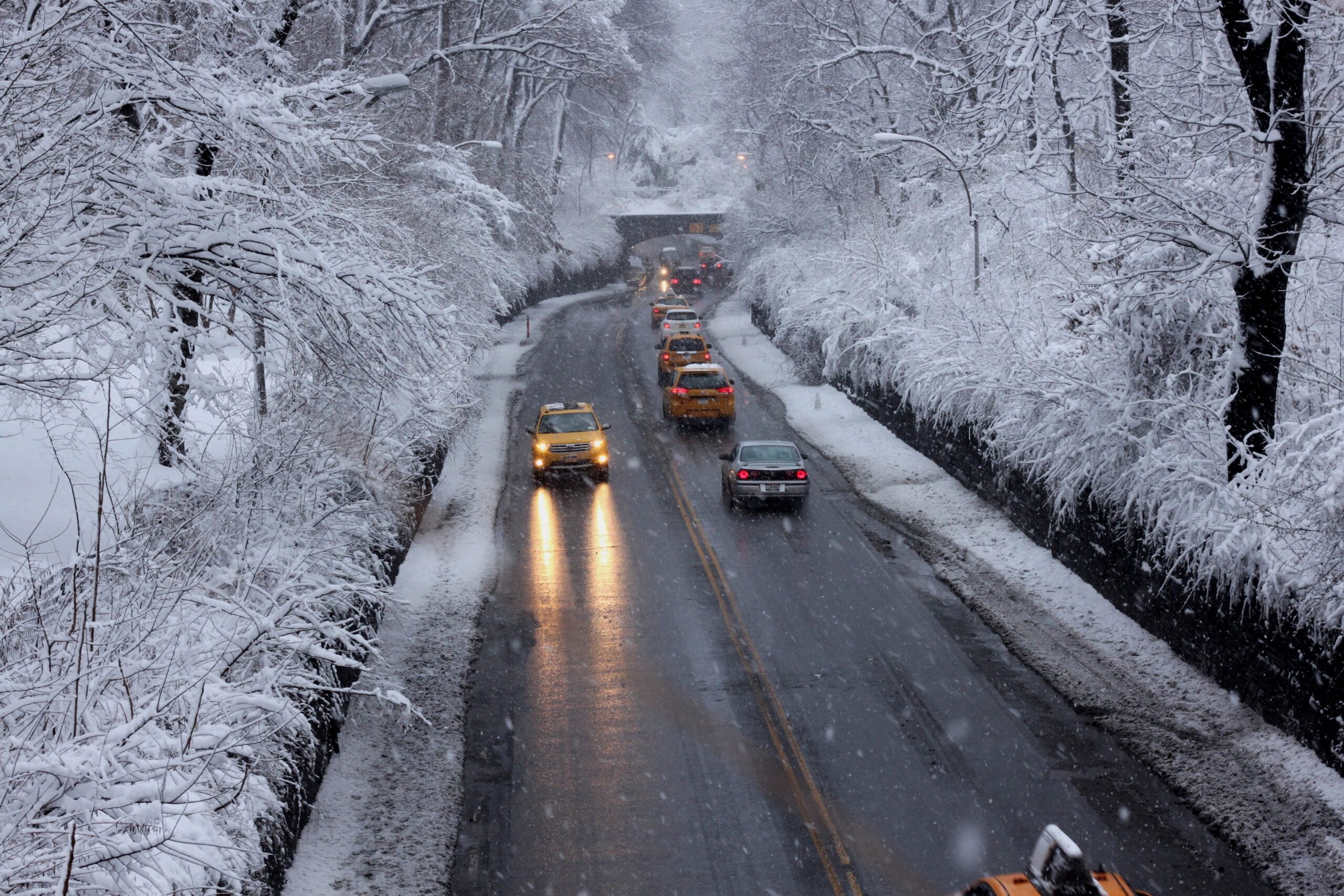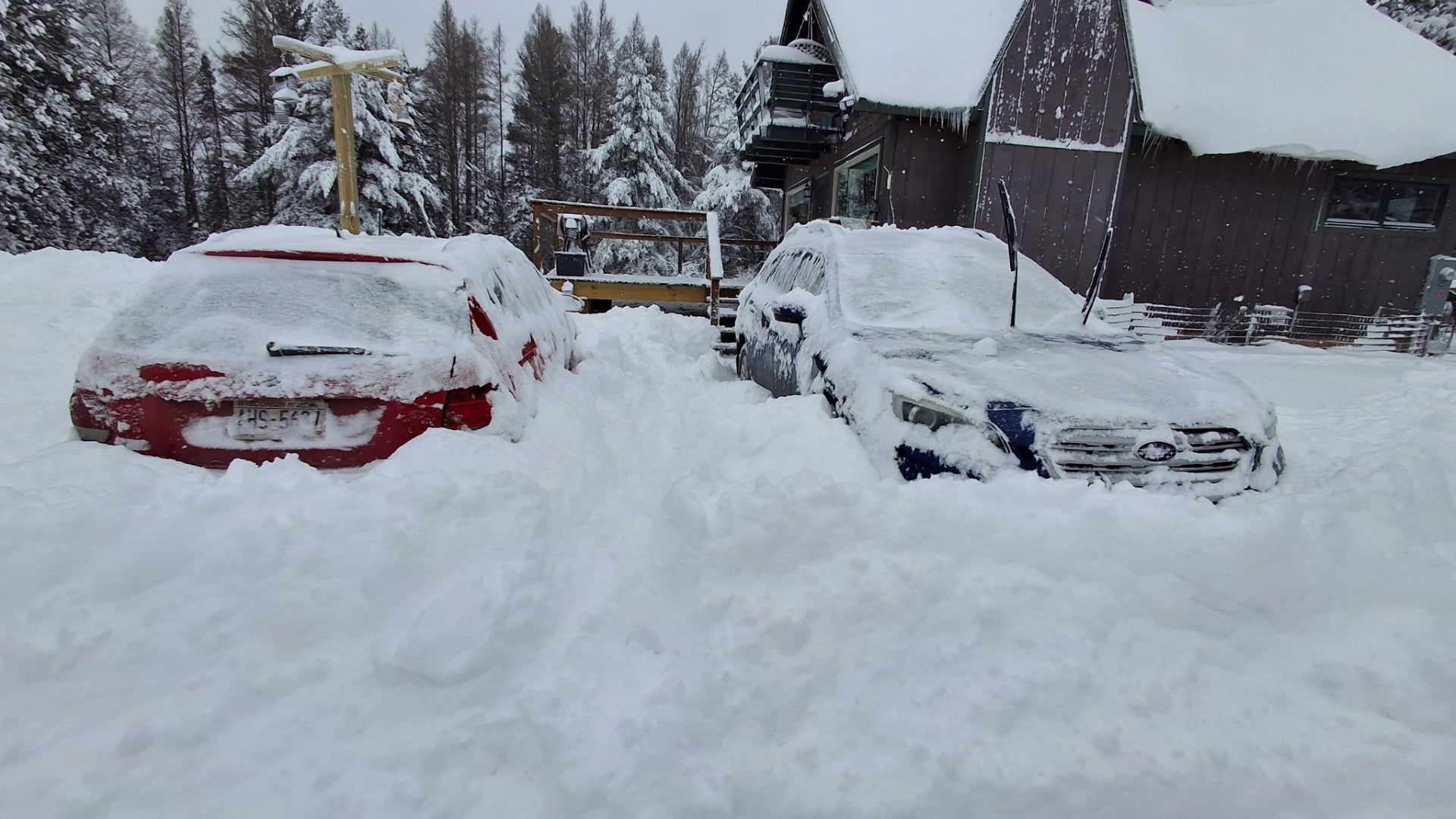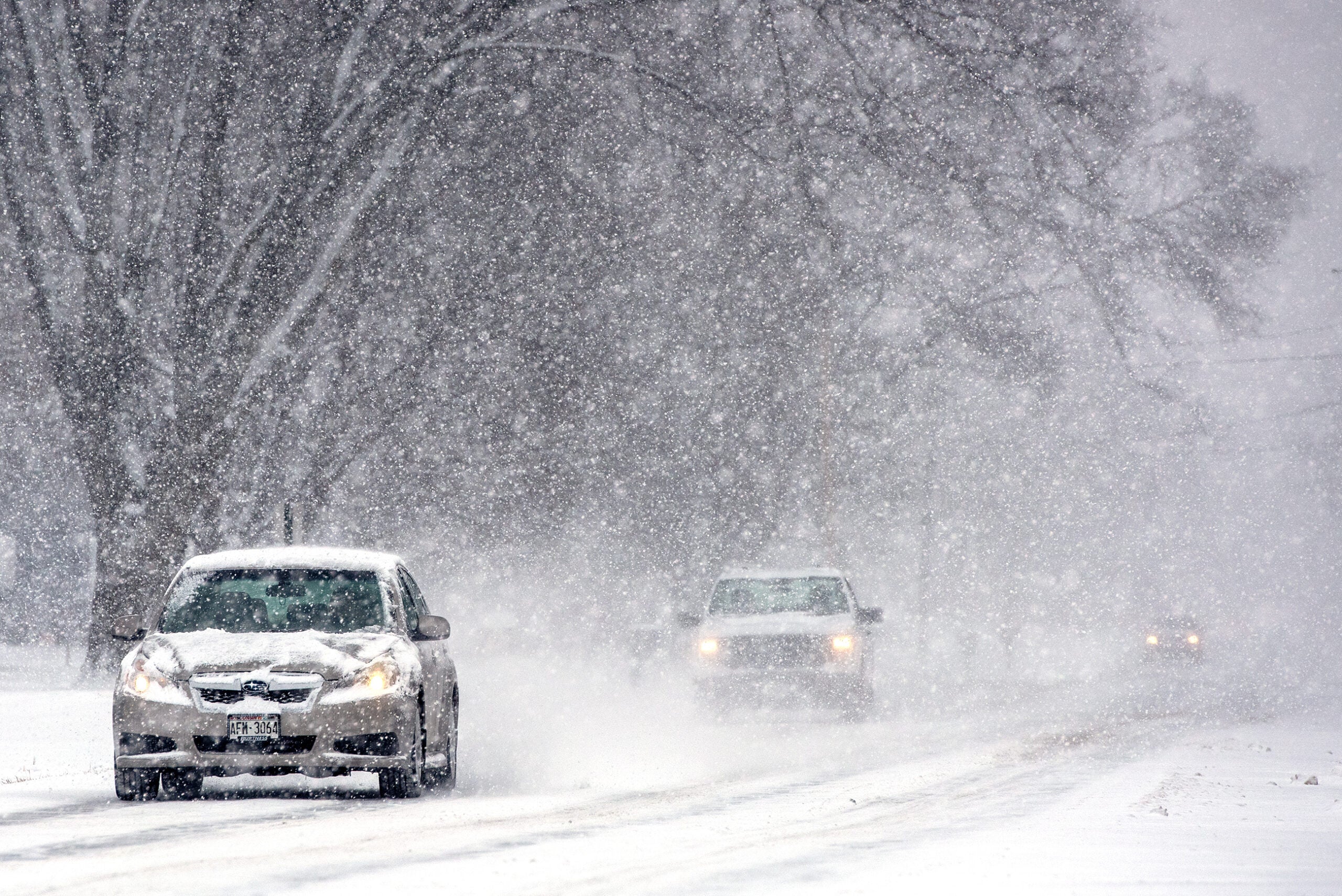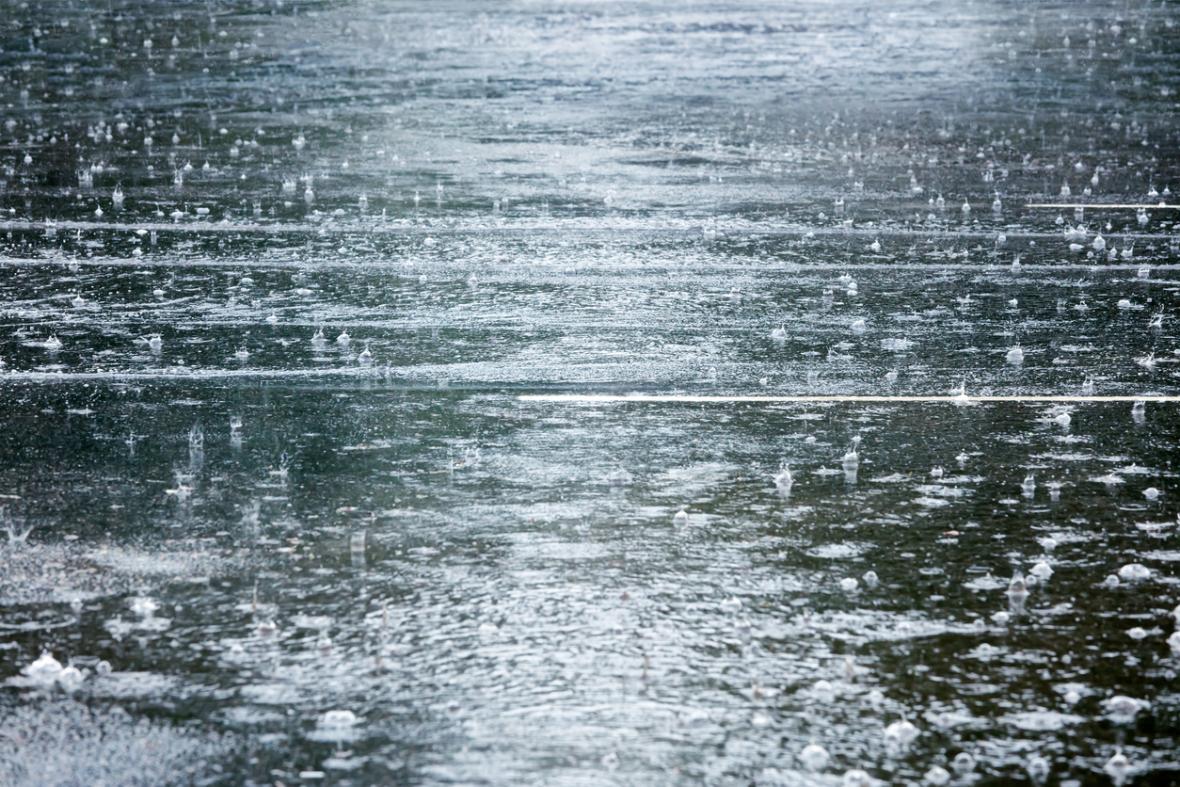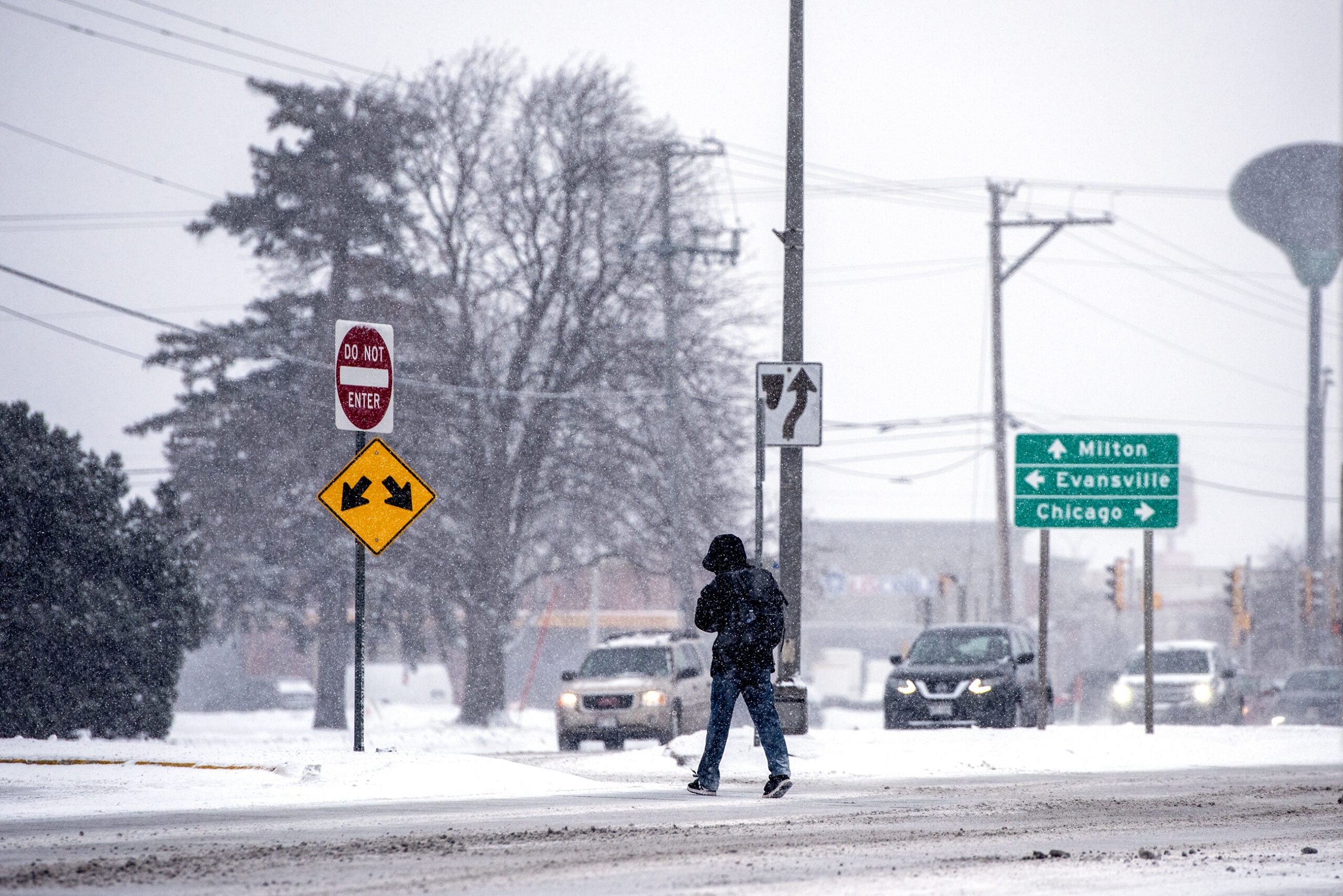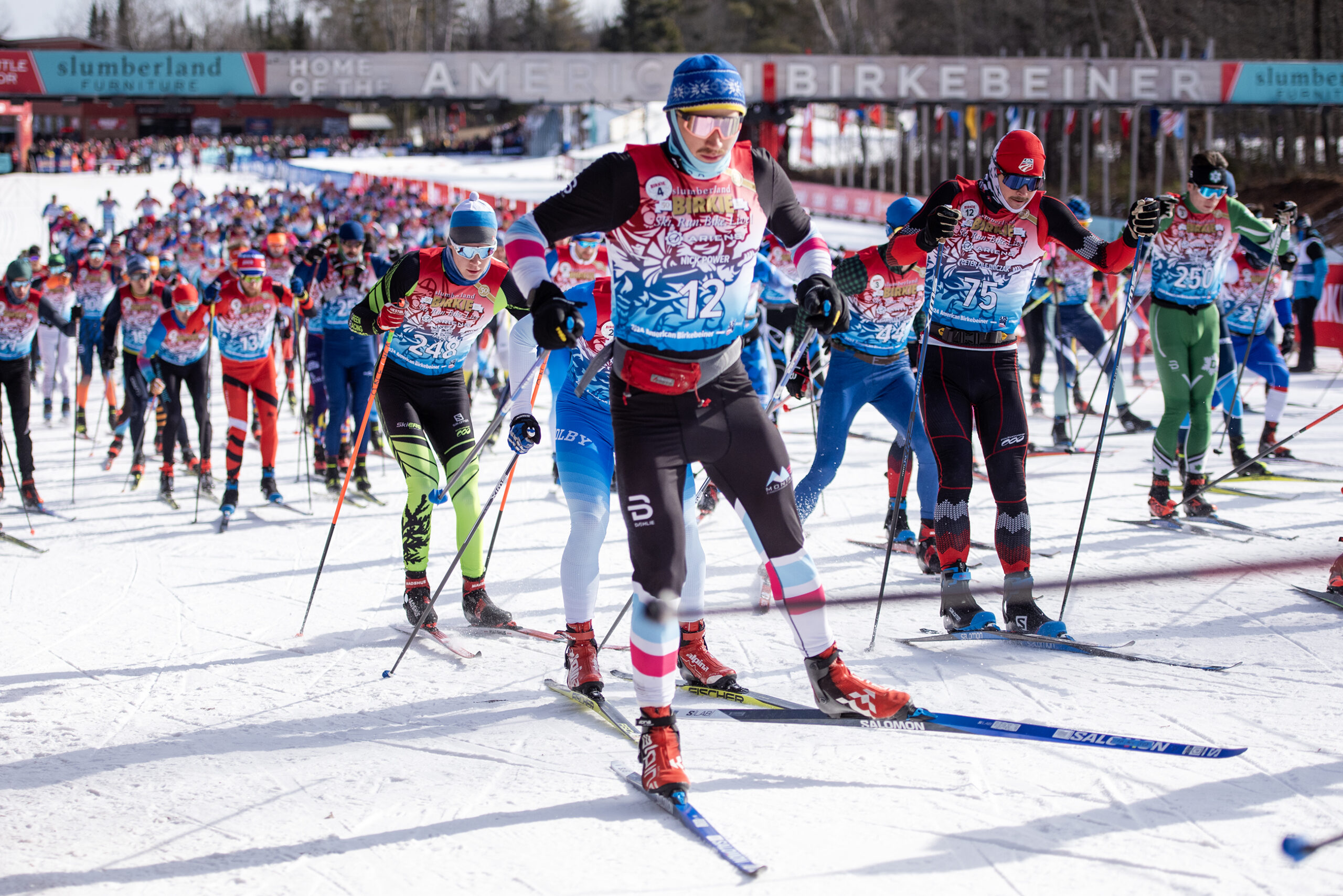A foot of snow or more has already fallen in some areas of far northern Wisconsin while a blast of Arctic air is expected to move in across much of the state.
A winter storm warning remains in effect until Wednesday evening for Douglas, Ashland, Bayfield, Iron and Vilas counties. The rest of the state is under a winter weather advisory Wednesday as blowing and drifting snow in lesser amounts has made travel difficult.
“The worst conditions that we’ve been seeing with this storm are pretty much along the south shore in northwest Wisconsin. So, that’s northern portions of especially Bayfield, Ashland and Iron (counties), but also into Douglas County a little bit as well. That’s where we’ve seen our highest snowfall reports so far,” said Josh Sandstrom, meteorologist with the National Weather Service in Duluth.
News with a little more humanity
WPR’s “Wisconsin Today” newsletter keeps you connected to the state you love without feeling overwhelmed. No paywall. No agenda. No corporate filter.
Heavy bands of lake-effect snow continue to affect the South Shore, especially around Port Wing and over to Bayfield and Ashland as of 11:15 AM. Slow down and use caution if you’re traveling in these areas today! #wiwx pic.twitter.com/JF8P9zoI29
— NWS Duluth (@NWSduluth) January 5, 2022
The heaviest snowfall reported as of 2 p.m. Wednesday along the south shore of Lake Superior was 18 inches in Lake Nebagamon in Douglas County.
Other snowfall totals so far:
- 15 inches in Blueberry
- 15 inches in Cornucopia
- 14 inches in Poplar
- 14 inches near Bayfield
- 12 inches Port Wing
North to northeast winds have gusted up to 45 mph near Lake Superior, limiting visibility to less than a mile Wednesday morning. Sandstrom said near whiteout conditions are expected at times, especially along U.S. Highway 2 near Ashland and State Highway 13 in the Bayfield Peninsula.
The Wisconsin Department of Transportation reported many roads and highways across the state were snow covered or slippery Wednesday.
Snow-covered roads reported across most of the state. Blowing and drifting snow is a big issue this morning. If you must travel, slow down and give extra following space. https://t.co/uHS4LfJURf is your resource for road conditions, traffic impacts, camera views and more. #wiwx pic.twitter.com/LI9EaA5HVY
— Wisconsin DOT (@WisconsinDOT) January 5, 2022
Around 4 inches of snow was reported near Wausau, less than 3 inches near Eau Claire and around 2 inches near Green Bay. Madison and Milwaukee are reporting less than an inch of snow, as of 1:30 p.m. Wednesday.
The National Weather Service in Green Bay warned visibility on roads could drop to less than half 1 mile Wednesday afternoon as an additional 1 to 2 inches falls through the evening.
West winds of up to 45 mph in southern Wisconsin are causing blowing and drifting that’s affecting travel, especially for north-south roadways.
“The gusty winds are expected to continue through the afternoon and gradually diminishing tonight, so we’ll still have those problems with blowing and drifting snow over the freshly fallen snow, and also the snow that was on the ground, continuing through the afternoon drive home,” Marc Kavinsky, meteorologist with the National Weather Service office in Sullivan, said Wednesday.
Across northern Wisconsin, the snow will begin to taper off Wednesday afternoon and evening for most areas. But, Sandstrom said, snow is expected to continue overnight for northern portions of Ashland and Iron counties, which could see an additional 10 to 12 inches. Snow totals could approach 20 inches or more in some areas.
“We take pride in our northern winters up here, and we’re hardy folks and that sort of thing, but it’s still a big storm — even by our standards,” said Sandstrom.
As the snow slows down, temperatures will dip into the single digits across northern Wisconsin with dangerous wind chills of 20 to 35 degrees below zero.
Temperatures are expected to drop into the teens and single digits Wednesday night for the rest of the state. Wisconsin Emergency Management officials urged people to take precautions Wednesday as an Arctic air mass is expected to move across much of the state Wednesday afternoon, bringing wind chills of 20 degrees below zero across southern Wisconsin on Thursday night.
Extremely cold air expected in the state this week will lead to dangerous conditions. ReadyWisconsin is urging everyone to plan ahead to help keep themselves and their loved ones safe. https://t.co/SDe7haFcW3 pic.twitter.com/6sVmMoOs9Y
— ReadyWisconsin (@ReadyWisconsin) January 5, 2022
Officials warned wind chills at those temperatures could cause frostbite to set in within 30 minutes. They urged people and their pets to limit time outdoors and dress for the weather, pack an emergency kit for vehicles and check furnaces and carbon monoxide detectors to make sure they’re working properly.
Wisconsin Public Radio, © Copyright 2026, Board of Regents of the University of Wisconsin System and Wisconsin Educational Communications Board.
